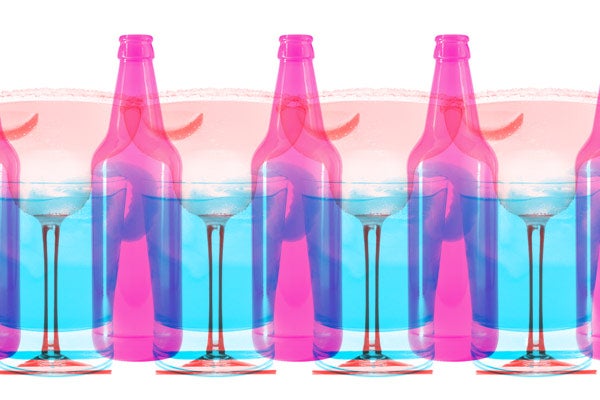
While not all women who occasionally binge will develop drinking problems, some women do. Other perils of binge drinking are obvious: alcohol poisoning, risky behavior, and brutal hangovers. Beyond that, though, lies a breadth of research that ties alcohol consumption to some seriously scary
stuff, like breast cancer, brain damage, and heart disease — and when female drinkers develop these problems, they are more affected than their male counterparts.
Speaking of the C-word, here’s a little-known fact that Dr. Richard Saitz, a primary care
internist and professor of medicine and epidemiology at Boston University Medical Center
points out. “There is no disagreement among the World Health Organization or the Department of Health and Human Services in the U.S. National Toxicology Program that the alcohol we drink is a classified as a carcinogen,” he says. “We usually don’t talk about ‘moderate use’ of a carcinogenic substance. And, we usually don’t talk about carcinogens by saying, ‘It’s a carcinogen if you have this much, but not if you have that much.’” All of which is to say that women should hold a special interest in easing up on the sauce.
Still, even when considering the cancer quotient and health warnings, many women
surpass the seven-drinks-per-week recommendation and seemingly carry on just fine.
Considering all the contradictory evidence, what exactly is the cut-off point for knowing
when to say when? “For alcohol amounts, you don’t want to get in a pissing match about the cut-offs
themselves,” Saitz says. Instead of simply thinking about confining intake to “moderate”
limits, Saitz encourages people to think about consumption in a continuous sense. “Most people think there’s some cut-off, but really, there isn’t. The more you increase [alcohol consumption], the more likely you are to experience harmful health consequences. The more you drink, or the more frequently you drink, the more the risks of those consequences go up.”

Toben Nelson, Sc.D, an alcohol researcher and assistant professor at the University of
Minnesota School of Public Health, agrees, noting that the risks don't magically appear only when
you enter so-called “binge drinking” territory. “Four drinks is a threshold that helps us
communicate risk a little bit better," he says. "But, there’s no big jump when you go from three drinks to four
drinks in terms of your risk — it’s incremental."
So, if you regularly opt for a fourth drink, that in itself may not be enough to bring on brain damage or heart disease, but considering the continual effects of alcohol — the loss in brain and motor function with each prospective drink, the likelihood to have another drink once you’ve
already started drinking, and the greater chance that you’ll be in a dangerous situation with
other inebriated folks — then a whole new set of risks becomes increasingly real the
more you consume.
“Any woman who drinks four drinks is going to feel it, unless she has alcoholism,” Saitz
says. “When you look at epidemiologic studies, people who report drinking those amounts
are at higher risk for things like falls, motor vehicle crashes and trauma.” There are also the social risks that women often face the more they drink, and, according to Nelson, these situations can be difficult to measure and impossible to predict. (For example, binge drinkers are more likely to have unprotected sex and multiple sex partners, increasing the risk of unintended pregnancy and sexually transmitted diseases.)
“There’s a whole psychology and rationalization of drinking behavior that really fosters more
drinking and puts people at greater risk,” Nelson says. “Usually when a person has been
intoxicated, nothing bad happens. We build up that well of experience, and start to think
that those negative consequences are not going to happen to us." What's more, he adds, we're often hesitant to attribute bad situations to the alcohol that was consumed.
The bottom line? Go out, have fun, but be thoughtful about what you drink. Sure, you might not
end up with cancer if you opt for that fourth drink every so often. But, the more
you drink in a sitting — and the more frequently that happens — the larger the risks to your health and safety. As Nelson notes, “The amount you think is too much is probably way too much." Something to consider before ordering another round.






